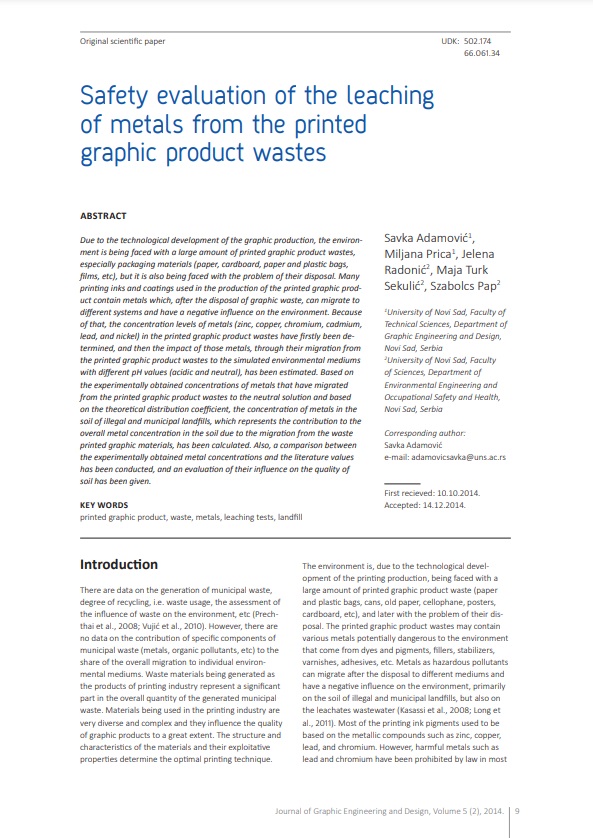Safety evaluation of the leaching of metals from the printed graphic product wastes

Published 2023-09-30
abstract views: 229 // Full text article (PDF): 160
Keywords
- printed graphic product,
- waste,
- metals,
- leaching tests,
- landfill
How to Cite
Copyright (c) 2014 © 2014 Authors. Published by the University of Novi Sad, Faculty of Technical Sciences, Department of Graphic Engineering and Design. This article is an open access article distributed under the terms and conditions of the Creative Commons Attribution license 3.0 Serbia.

This work is licensed under a Creative Commons Attribution 3.0 Unported License.
Abstract
-
Due to the technological development of the graphic production, the environment is being faced with a large amount of printed graphic product wastes, especially packaging materials (paper, cardboard, paper and plastic bags, films, etc), but it is also being faced with the problem of their disposal. Many printing inks and coatings used in the production of the printed graphic product contain metals which, after the disposal of graphic waste, can migrate to different systems and have a negative influence on the environment. Because of that, the concentration levels of metals (zinc, copper, chromium, cadmium, lead, and nickel) in the printed graphic product wastes have firstly been determined, and then the impact of those metals, through their migration from the printed graphic product wastes to the simulated environmental mediums with different pH values (acidic and neutral), has been estimated. Based on the experimentally obtained concentrations of metals that have migrated from the printed graphic product wastes to the neutral solution and based on the theoretical distribution coefficient, the concentration of metals in the soil of illegal and municipal landfills, which represents the contribution to the overall metal concentration in the soil due to the migration from the waste printed graphic materials, has been calculated. Also, a comparison between the experimentally obtained metal concentrations and the literature values has been conducted, and an evaluation of their influence on the quality of soil has been given.

